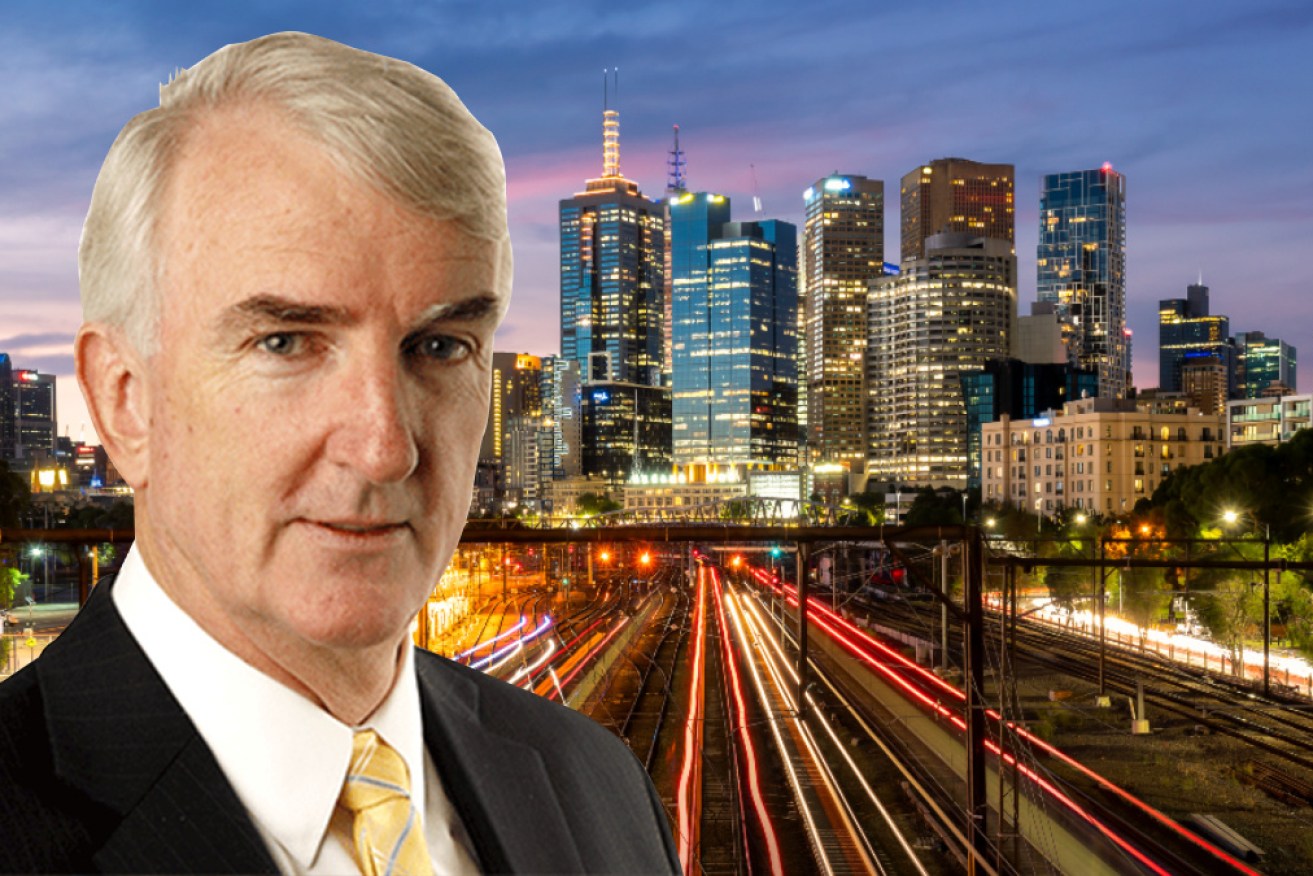Michael Pascoe: Taxpayers are shelling out for yet more political adverts


A recent advertising campaign is another example of the government's infrastructure spin, Michael Pascoe writes. Photo: TND
You might have noticed the “BuildingOurFuture.gov.au” political advertising blitz by Michael McCormack’s Department of Infrastructure, Transport, Regional Development and Communications.
(Well, it was his department on Monday morning.)
Perhaps unsurprisingly, the advertising is a political con job.
There is no boost in real terms in the federal government transport infrastructure investment.
The much-announced “$110 billion infrastructure plan” is spread over 10 years, the latest iteration of a Coalition spin trick that’s been running for eight years while the state governments are doing most of the infrastructure spending anyway.
The advertising campaign with different ads for different markets – or perhaps that should be “electorates” – may be a parting gift for media outlets, a final use of public money for political ends.
Mr McCormack was being far too modest about his spending in both Monday’s question time and post-spill media conference.
Never mind grants to regional councils – “Whether it is West Torrens with a lighting project at the community oval, whether it is Gympie fixing a footpath that was broken, we are making sure that we get the money out the door” – the former Deputy Prime Minister was at least nominally responsible for the Coalition’s $3 billion Community Development Grants scandal.
And then there’s the billion-dollar Building Better Regions Fund and the $2.5 billion Local Roads and Community Infrastructure Program, all under the former National Party leader’s wing, all skewing disproportionately to Coalition and key independents’ seats.
About the only problematic grants program not linked to Mr McCormack’s department was #sportsrorts. That was officially worn by the Nationals’ leader in the Senate, Bridget McKenzie.
His department’s current infrastructure advertising splurge is, in my opinion, using public funds for political ends.
It is a campaign without merit or point other than attempting to improve the Coalition’s polling.

A screenshot of the government’s infrastructure ad.
It provides a false image of transport infrastructure investment.
To recap: It was Joe Hockey in 2014 who started the PR trick of thinking of an impressively large number and then adding up the number of years necessary to reach it.
Thus in Mr Hockey’s first budget, he made a lot of noise about a “record infrastructure commitment” of $50 billion. The biggest ever, unprecedented, so on and so forth.
The fine print was that the commitment was to be spread over six years – an average of $8.3 billion. A neat way to cover a reduction in actual spending.
Anything Joe Hockey could do as Treasurer, Scott Morrison could do 50 per cent better. Thus in his 2017 budget, Mr Morrison spun that the infrastructure commitment was being boosted to $75 billion.
But that was to be over 10 years – a nominal cut in spending to $7.5 billion a year, a figure maintained in Mr Morrison’s 2018 budget, shrinking further in real terms and ignoring the Reserve Bank’s increasingly desperate calls for greater infrastructure investment.
With the pattern now set, come a new Liberal Treasurer, comes an even bigger figure: $100 billion by Josh Frydenberg in his 2019 budget. Yes, on the face of it, a spending increase at last to $10 billion a year.
(Remember how the economy was steadily turning down in 2019, prompting the RBA to cut interest rates three times before the pandemic hit.)
With the economy recessed by COVID, Mr Frydenberg’s October 2020 budget added another $10 billion on the forecast total for the coming decade – another $1 billion a year.
Australia was already spending about $30 billion a year on transport infrastructure, so it was a nominal increase of 3 per cent with little capacity to significantly pull forward spending.
There was no increase in that pledge in last month’s budget, but the Treasurer played the media like a fiddle on the Sunday night before his Tuesday speech, creating the impression in every newspaper in the country on Monday morning that there was indeed big, new, flashy transport spending, grabbing universal front-page coverage.
Even in his budget speech on May 11, Mr Frydenberg said: “Tonight we make $15 billion in additional infrastructure commitments.”
Well, no. In the same speech he confirmed that he was actually sticking with the $110 billion over 10 years – no increase.
And there’s no suggestion of maintaining the real value of the headline figure. The transport infrastructure construction industry is already running at close to capacity – it’s one industry where there is indeed inflation, never mind the usual massive cost blowouts of major projects like WestConnex.
Even assuming a conservative transport construction inflation rate of 2.5 per cent, by the middle of Mr Frydenberg’s promised decade, the real value of his $11 billion a year will be about the same as Joe Hockey’s $8.3 billion back in 2014.
That is nothing to boast about.
Besides, the NSW government alone is spending more on transport infrastructure than the Commonwealth is promising.
As industry research and forecasting company Macromonitor advised: “Generally, spending programs over a 10-year period should be considered indicative at best.”
So the federal government is borrowing millions of dollars to pay for an advertising program that serves no good purpose, that merely provides a lick of PR spin, a whiff of fake news, for the usual business of the Commonwealth funding a minority share of our transport construction investment.
Mr McCormack didn’t list that as one of his achievements on Monday.








